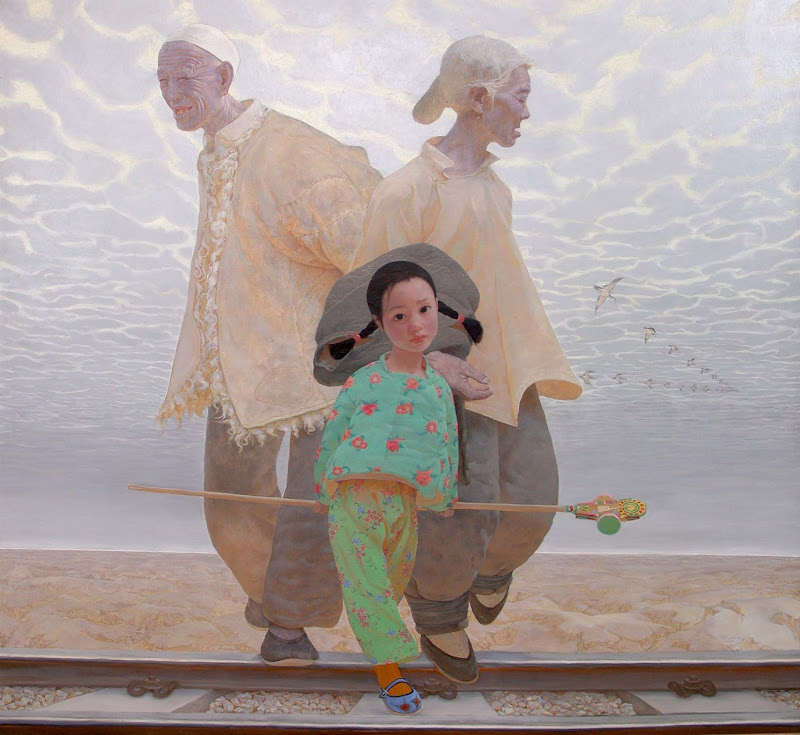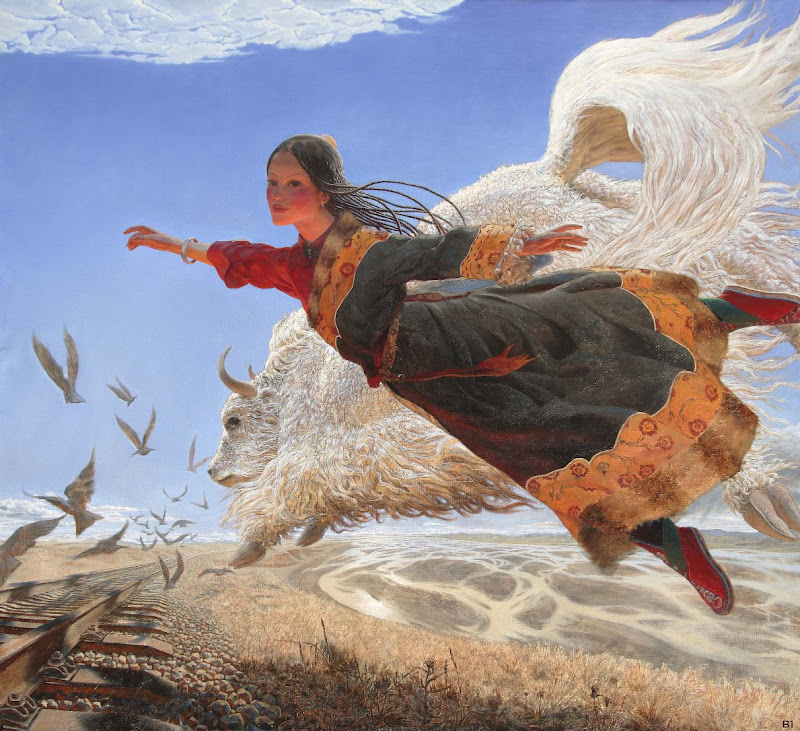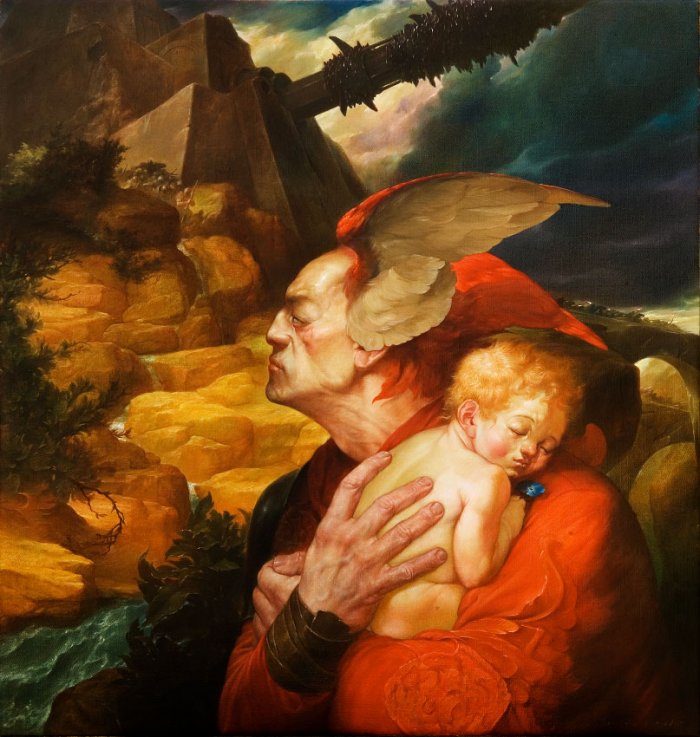
sexta-feira, 25 de junho de 2010
Sankai Juku
Marcadores:
Amagatsu Ushio,
Butoh dance,
Sankai Juku
terça-feira, 22 de junho de 2010
Victor Safonkin
Marcadores:
Czech Republic,
Eurosurrealism,
painting
sexta-feira, 18 de junho de 2010
ENSAIO SOBRE A CEGUEIRA
ENSAIO SOBRE A CEGUEIRA - TRAILER OFICIAL / CEGUEIRA
ENSAIO SOBRE A CEGUEIRA conta a história de uma inédita epidemia de cegueira, inexplicável, que se abate sobre uma cidade não identificada. Tal "cegueira branca" - assim chamada, pois as pessoas infectadas passam a ver apenas uma superfície leitosa - manifesta-se primeiramente num homem no trânsito e, lentamente, espalha-se pelo país. Aos poucos, todos acabam cegos e reduzidos a meros seres lutando por suas necessidades básicas, expondo seus instintos primários. À medida que os afectados pela epidemia são colocados em quarentena e os serviços do Estado começam a falhar, a trama segue a mulher de um médico, a única pessoa que não é afectada pela doença.
ENSAIO SOBRE A CEGUEIRA, dirigido por Fernando Meirelles (de "O Jardineiro Fiel" e "Cidade de Deus", pelo qual foi indicado para o Oscar de Melhor Director), é baseado na obra do escritor português José Saramago, único escritor da língua portuguesa a receber o primeiro Nobel de Literatura.
A reação de José Saramago depois de assistir pela primeira vez ao filme "Ensaio Sobre a Cegueira" com o diretor Fernando Meirelles.
domingo, 6 de junho de 2010
Wang Yiguang
.jpg)






Wang Yi Guang was born in Yimeng Mountain area of Shandong, China. He is a younger brother of another notable painter, Wang Yidong [1]. He graduated from the Central Academy of Fine Arts in Beijing in 1990. He participated in various national and international exhibitions and art fairs in Beijing, Guangzhou, Tokyo and Hong Kong. Wang Yi Guang currently works as a creative designer for the China Railway Construction Corporation.
In 2002 they worked on the Qinghai - Tibet railway. The painter was struck by the "humble beauty" of the Tibet. He wrote:
I have been able to visit the Tibetan plateau a number of times. I've been deeply touched by the breathtaking landscape of Tibet and the happy-go-lucky spirit of the Tibetan people. The Tibetan people's profound regard for the natural world and animals has also cast a life-long impression on me. Their unwavering optimism, all-encompassing and peaceful way of life, are in extreme contrast with the psychological states of modern city dwellers. In my works of life on the Tibetan Plateau, I focus more on movement, so as to convey the beauty of extreme tension and moments of life. When I was in Tibet, I spent a lot of my time lying down in the grass, as I suffered from acute mountain sickness. As I lay there gasping for air, a delightful picture revealed itself before me: a couple of young, spry Tibetan girls racing about the countryside with their herd of yaks. These Tibetan girls reminded me of 'Feitian', the flying Devi (literally: 'goddess')*, when they are still earthly beings. The fairy tale relationship between man and yak, also called "ship of the plateau", came to life right before my eyes. In my series of paintings on the Tibetan plateau, I try to convey the unique psychological journey I experienced during this time. Similarly, these feelings surfaced through long periods of "observing and reflecting". This dream-like state has in turn added a romantic dimension to my works, which can be seen in paintings such as "Sun in a Distant Place" and "Towards the Sun". By applying surrealistic elements the transfer of images can be fully articulated.
In my oil paintings I try and convey my feelings for a target, as though I were encountering it for the first time. I do this by trying to capture its characteristics and intrinsic humour. I believe that painters should integrate their own impression of a certain experience, observation and/or response in their work so as to create expressive images.
The Tibetan works were exhibited in 2004 on a solo exhibition Retrospective of Tibet - The Spirit and Movement at the Schoeni Art Gallery of Hong Kong
http://en.wikipedia.org/wiki/Wang_Yiguang
Marcadores:
Chinese: 王沂光;China,
painting,
Tibete,
Wang Yi Guang,
Wang Yiguang
sábado, 5 de junho de 2010
Johann Sebastian Bach
Marcadores:
BBC,
Great Composers,
Johann Sebastian Bach,
TV series
quinta-feira, 3 de junho de 2010
Descripção analytica da execução da estátua equestre erigida em Lisboa à Gloria do senhor rei D. José I
Descripção analytica da execução da estatua equestre erigida em Lisboa á gloria do senhor rei fidelissimo D. José I. : com algumas reflexões, e notas instructivas, para os mancebos portuguezes, applicados á escultura : e com varias estampas que mostrão os desenhos, que servirão de exemplares : alguns estudos que se fizerão : a maquina interna, e methodo, com que se construio o modelo grande : e toda a escultura do monumento, do modo que se expoz ao público (1810).
Fonte: Machado de Castro, Joaquim, 1732-1822
Marcadores:
D. José I,
Estátua equestre,
Portugal
Assinar:
Postagens (Atom)




